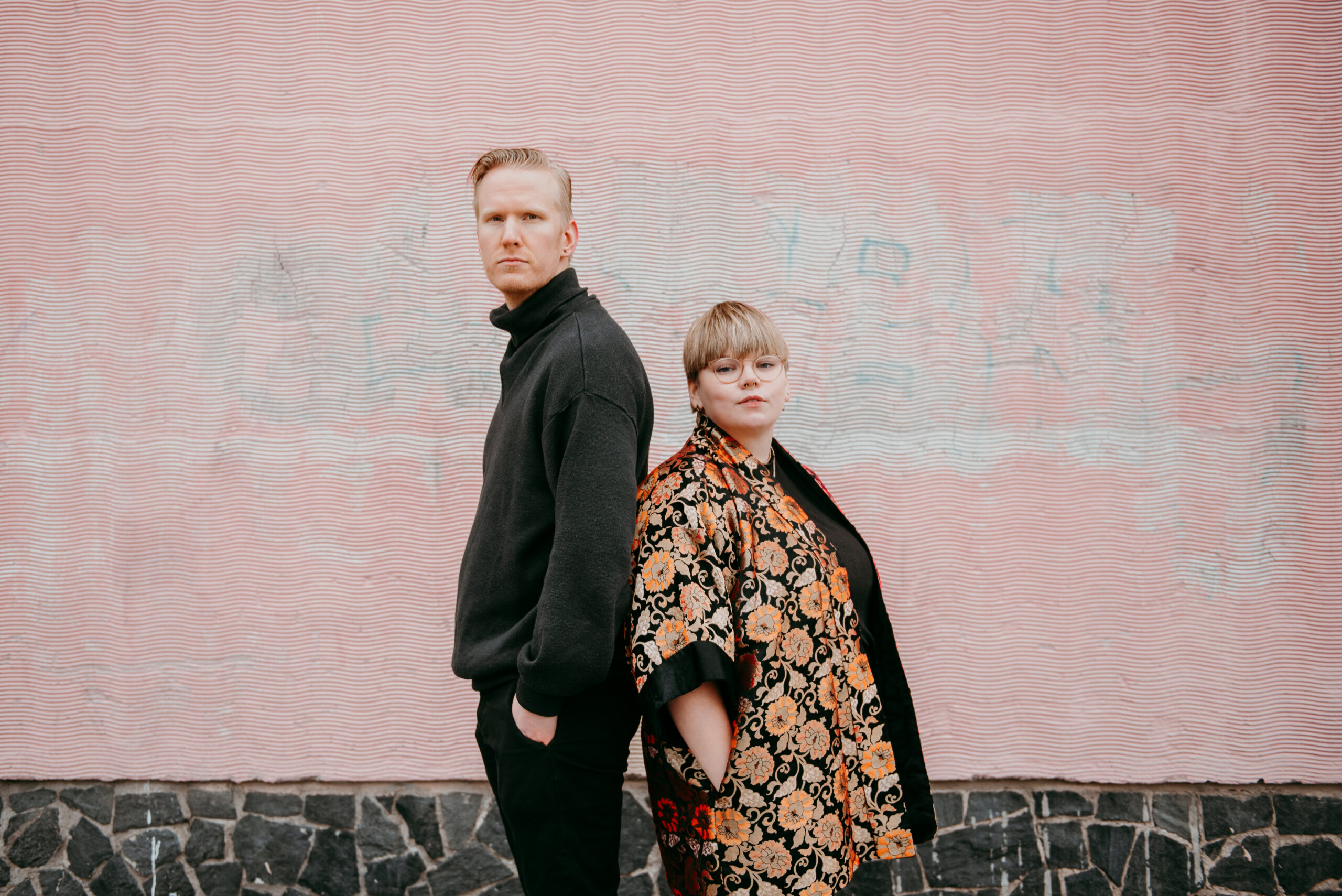In the Nessling Foundation’s autumn 2021 general call for grant applications, a total of 24 grants were awarded. Media professionals Johannes Roviomaa and Vilma Rimpelä, RARE Media ant the Arctic Centre (University of Lapland) have united forces to make art.
Also read the interviews of Long Xie and Anni Orola.

Vilma Rimpelä & Johannes Roviomaa. Kuva: Eeva Murtolahti
What are you working on and why?
Johannes Roviomaa: “We want to create a documentary film and an impact campaign on Arctic nightmares and dreams.
To quote Vilhjalmur Stefansson, Canadian Arctic explorer (1879-1962), “There are two kinds of Arctic problems, the imaginary and the real. Of the two, the imaginary are the most real.”
We want to believe that those imaginary problems are not filled with nightmares, sorrow, anxiety and hopelessness.
I lived in Rovaniemi for seven months, and during that time, I ended up working as a visiting scholar at the Arctic Centre. I realised that although the Arctic research made in Finland is immensely important, it might feel distant to people, young people, in particular.
Rare Media, on the other hand, knows how to speak to young people in a language that feels meaningful for them, so I decided to contact Rare. I see this also as an opportunity to develop and find new ways of communication and existence. We hope that the project sheds light on the exceptional multidisciplinary research by the Arctic Centre”.
Vilma Rimpelä: “Johannes contacted us and proposed cooperation. We came up with the ambitious idea of creating a documentary film and an impact campaign. This project combines the high-quality research information of the Arctic Centre with Johannes’ journalistic vision and writing skills, and we at Rare Media wrap it all up in a format that appeals to young audiences. The project has all the elements of changing the world, and we are really excited about the fact that the Nessling Foundation decided to support us.
In addition to the screenwriter Johannes Roviomaa and Rare Media, the Arctic Centre is involved in the project.”
How will your project change the world?
Johannes: “We hope that the project opens up new perspectives on the Arctic and gives people hope. We want to reach an audience that is as vast as possible, because the world does not belong only to current generations, but also to past generations and those who will come after us. This applies to all living things.
However, our work focuses on young people and future generations, because they will have to face a future that is becoming more and more unpredictable”.
Vilma: “Research shows that information and the sharing of information are among the most effective ways of promoting sustainable development. We hope that the project will raise awareness of Arctic matters among young people and inspire them to become involved in changing the world. Both the documentary film and the impact campaign are as solution-oriented as possible.”
Why did you decide to make a documentary film?
Johannes: “We wanted to combine science and art across the entire spectrum of life. We believe that the documentary film will make the audience interested in the Arctic and eager to know more about it. In addition to the film, we will create an impact campaign with social media content, exhibitions and discussions.
The aim of the documentary film and the impact campaign is to bring together different people who share the same goal: to protect the Arctic region, nature, people and the ecosystem that we are seamlessly part of.”
Vilma: “A picture is worth a thousand words, and moving pictures are worth even more. We want to bring the Arctic to life through audiovisual storytelling, because audiovisual stories are the way young people, in particular, use media these days. At Rare, we have been wanting to make a long documentary film for a long time, and now we finally have the chance to make that dream reality!”

Picture: Eeva Murtolahti

